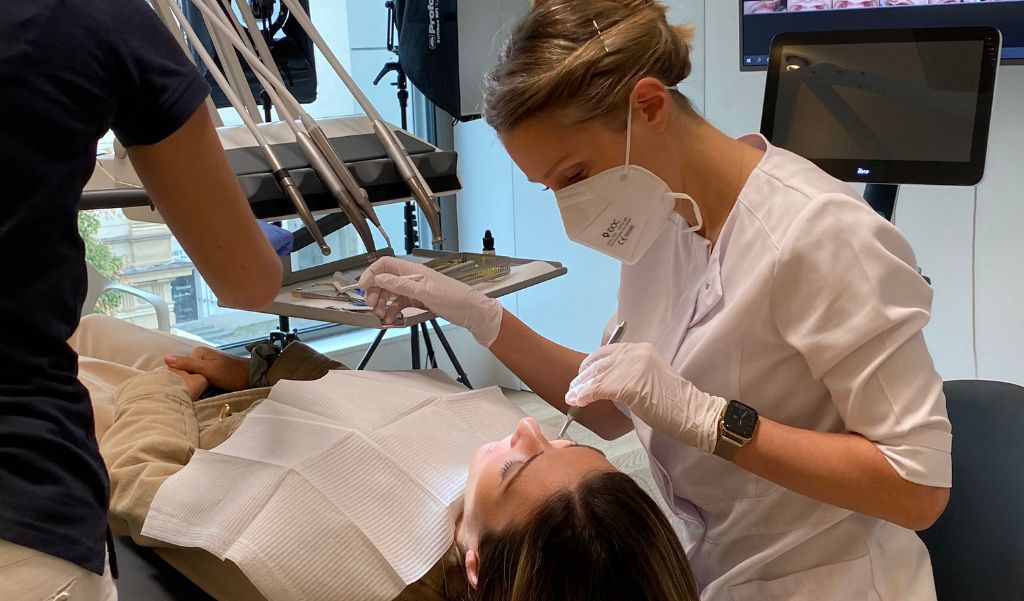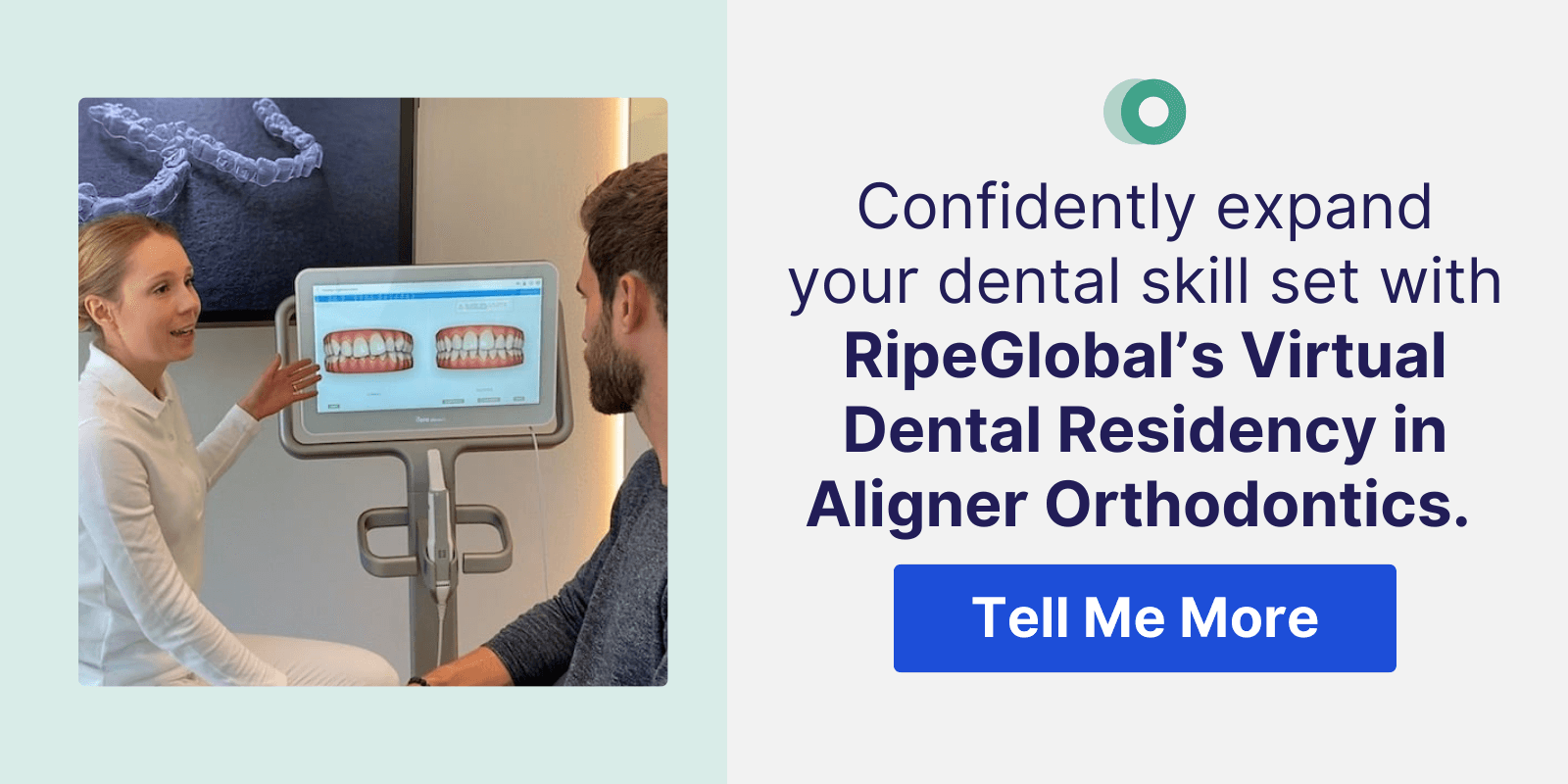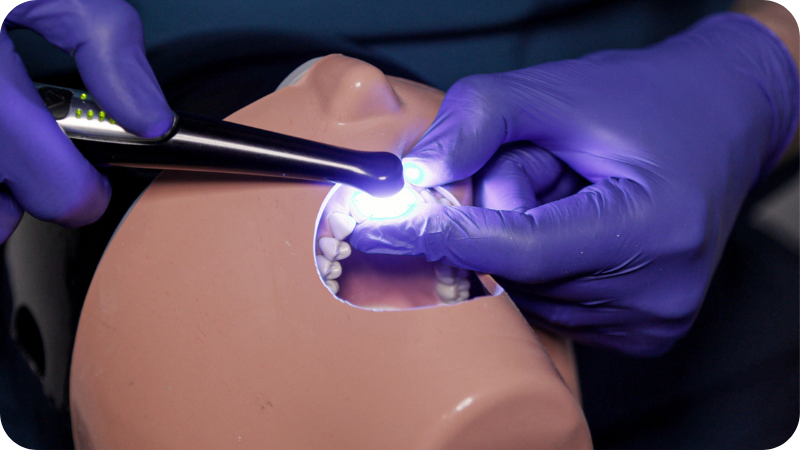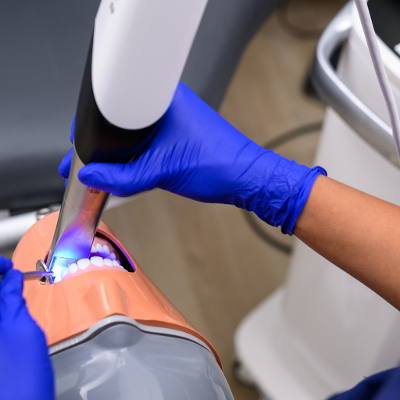When it comes to orthodontics, clear dental aligners are the “cool kid” on the block. That’s because more adults now have options besides traditional metal braces. But making your patient’s vision of a straight smile a reality takes more than slapping on an aligner — even the clear kind.
Here, we’ll tackle the challenges of aligner orthodontics and how our Aligner Orthodontic Virtual Dental Residency can help you meet these challenges head on while improving your dental skills along the way.
The Role of Dental Aligners in Orthodontics
While there will be cases where braces are a viable option, clear aligners are the closest thing to an invisible, pleasant orthodontic treatment. As the National Library of Medicine (NIH) article puts it:
The increase in the number of adult orthodontic patients has prompted an upsurge in the demand for esthetic and comfortable alternatives to conventional fixed appliances.
Why are they so popular? Here’s a quick look at the benefits of orthodontic aligners:
- More comfortable than traditional braces.
- Patients can remove the aligner to brush their teeth.
- Can effectively move the teeth over time for proper alignment.
Considering the popularity and benefits of aligners, you can’t master orthodontics in general unless you know how to get consistent — and positive — patient outcomes. The most effective path for using clear aligners to transform smiles is through a continuing education option tailored for results.
What You Need To Learn About Aligner Orthodontics
Treatment Planning for Case Acceptance
Aligner orthodontics is like driving: don’t get behind the wheel unless you know where you’re going and how to get there in one piece. To get aligner cases, you need a clearly defined treatment plan — your roadmap to success.
For treatment plans that make sense and will be accepted, you need:
Digital Dentistry Basics
Digital dentistry allows you to show your patient what their teeth will look like after the treatment process is complete — before you even start the process. It also provides a chance for you to work through the stages of the alignment process ahead of time so you know exactly what your patient needs and when.
Communication Skills
Picture this scenario:
Dentist: “We will properly attach buccal and lingual TADs to ensure posterior intrusion.”
Patient: “No, I don’t want anything attached to my mouth. I thought that’s why we’re doing clear aligners instead of braces.”
*awkward silence*
Oops. Sometimes, what we are trying to say to the patient gets lost in translation. When you can clearly explain your treatment plan, listen to a patient’s questions and concerns, and alleviate their worries with solid facts, you’ll turn hesitant patients into excited individuals.
Manage Class II Cases and Convert Them to Class I
Complex orthodontic treatments require hands-on experience and know-how so you can provide the best possible outcomes. You need practice to confidently identify which techniques and methods work best for which cases.
How To Use TADs With Clear Aligners
Placing Temporary Anchorage Devices (TADs) in the anterior palate in coordination with dental aligners enhances the effectiveness of the aligner treatment — if it’s done right. Even if you don’t use TADs for every aligner case, knowing how to place TADs enables you to correct Class II cases predictably and quickly. It can even broaden your treatment options so that you can provide other services, such as correcting a gummy smile.
Why the Aligner Orthodontics Virtual Residency Is Boss
So, you want to upskill your orthodontics dentistry. Awesome! Continuing education is the way to go. Our Aligner Orthodontics Virtual Dental Residency (VDR) will teach you what you need to know to turn around and apply it to your practice. Many of our students start to see improvement in their skills after only a few months of participation. How is that possible?
With the program, you get:
- Your very own Sim-Kit (for hands-on practice).
- Mentorship and support from our world-class instructors.
- Simulation training and practical instruction.
- 24/7 support.
- The list goes on.
After successfully completing the VDR, you can expect:
- 2x clinical production rate (on average).
- Up to 5 monthly orthodontic case starts.
- To finish cases in half the time it used to take you.
When you enroll in our learning experiences, we take your commitment seriously. You can check the details of our guarantee to see what we mean.
Master Dental Aligners and Grow With RipeGlobal
At RipeGlobal, we want any dentist who wants to learn to actually learn. Our Virtual Dental Residencies are designed to help you grow by teaching you the right techniques and skills in a way that sticks.
For more information and to enroll in our Aligner Orthodontics Virtual Dental Residency, check out this page.





